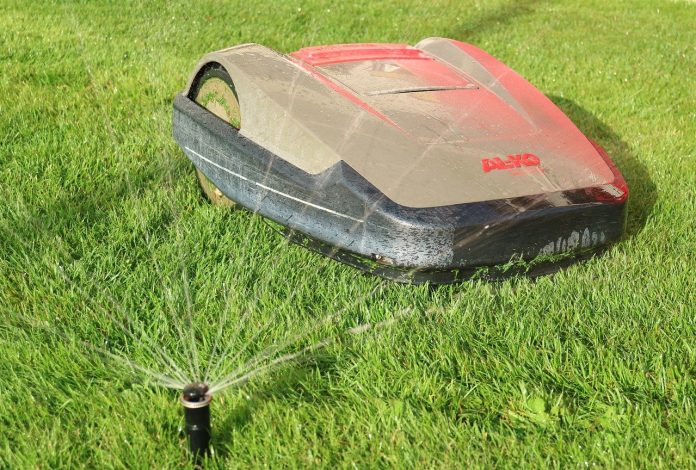Mowing Wet Grass
After days of rain, your lawn might feel overgrown and jungle-like. While the urge to mow is strong, cutting wet grass can be risky—it may damage both your mower and your lawn. Understanding when and how to mow wet grass is essential to keep your lawn healthy and your equipment in good condition.
Effects of Mowing Wet Grass
Mowing wet grass can lead to two primary issues: clogged mower blades and brown patches on your lawn. Moisture makes grass blades sticky, causing clumps to form and clog your mower, reducing its efficiency and potentially dulling the blades. Additionally, freshly cut wet grass may dry too quickly, causing unsightly brown or burnt patches where the lawn appears damaged.
How to Mow Wet Grass Without Damaging Your Lawn
To safely mow wet grass, proceed slowly and make multiple shorter passes rather than one long cut. Avoid driving over the same spot multiple times to prevent lawn damage. Using a push mower instead of a riding mower can reduce pressure on wet turf, lowering the risk of soil compaction and damage. Always ensure mower blades are sharp for cleaner cuts and consider increasing the cutting height to avoid scalping wet grass.
Best Mowers for Wet Grass
While mowing wet grass is generally not recommended, certain mower types handle it better. In cases of wet soil or lawns with heavy thatch buildup, alternative equipment such as reel mowers, dethatchers, and walk-behind string trimmers can be more effective and less damaging.
1. Mechanical Mowers
Mechanical mowers, including rotary, reel, mulching, and side discharge types, are commonly used for dry grass. However, rotary mowers can struggle on wet grass, as they may throw moist clippings and cause turf damage, especially walk-behind models. If used on wet ground, operate them slowly and cautiously to minimize harm.
2. Reel Mowers
Reel mowers come as push or power reel models. Push reel mowers require more effort but are gentle on lawns, while power reel mowers use small engines to aid blade propulsion. Both perform best on short, dry grass and struggle with tall, wet grass, as their wheels may sink into soft ground, making movement difficult.
3. Dethatchers
Dethatchers are specialized tools designed to remove thatch buildup with horizontal rotating blades instead of cutting grass. They can be adjusted for use on wet lawns without damaging turf, helping to improve lawn health and prepare the surface for mowing.
4. Walk-behind String Trimmers
String trimmers use a rotating nylon line rather than blades, making them ideal for trimming around obstacles. While advantageous on wet ground since they exert less pressure, their effectiveness on large wet areas is limited. Consider their use primarily for spot trimming or edging in damp conditions.
Top Tips for Mowing Wet Grass
- Use a metal rake to clear debris and soil clumps before mowing to keep blades clean and sharp.
- Begin mowing taller grass first to avoid chopping smaller blades prematurely.
- Set your mower to a higher cutting height to minimize moisture uptake and protect grass blades.
- Consider dew removal methods or using a lawn dethatcher to reduce moisture before mowing.
- Do not overload your mower with wet clippings; make multiple passes if necessary.
By following these guidelines, you can minimize lawn damage and mower wear while dealing with wet grass. Patience and careful technique will help maintain a healthy, attractive lawn through challenging wet conditions.
Conclusion
Mowing wet grass requires caution to avoid damaging your lawn and equipment. Proceed slowly, avoid repeating cuts over the same areas, and monitor for issues like clogged blades or brown patches. Using the right mower and adjusting your mowing approach ensures a healthy lawn even after rainfall.
Additional Insights on Mowing Wet Grass
Mowing wet grass not only affects turf health but can also increase soil compaction, leading to poorer drainage and root growth problems. To improve lawn resilience, aerating wet or compacted soil can help alleviate pressure and promote better water absorption. Additionally, using sharp, well-maintained blades prevents tearing grass blades, which reduces disease risk. Timing your mowing session for mid-morning, when dew has largely evaporated but the grass isn’t fully dry, often offers the best balance. Regularly maintaining your mower, including blade cleaning and adjustments for wet conditions, contributes significantly to lawn health and equipment longevity.
FAQs
Read more: Lawn Mower: Its Types and How to Start a Lawn Mower? A Complete Guide
Mowing wet grass can damage your lawn by pulling up chunks of soil along with grass blades. It also leads to clogged mower blades and brown patches, affecting lawn health and appearance.
Most standard lawnmowers can handle wet grass with adjustments, such as raising the cutting height and mowing carefully to avoid overloading the mower.
If possible, avoid mowing wet areas. When necessary, use a dethatcher or walk-behind string trimmer to reduce excess moisture before mowing.
Avoid mowing tall, wet grass if possible. If not, mow on a higher setting and proceed carefully to prevent cutting smaller grass blades unevenly or damaging the mower.
Reel mowers are most effective on short, dry grass and do not perform well on tall, wet grass since their wheels can sink into soft ground, hindering movement.
If you’re interested in learning more about lawn care, check out Advantages of Artificial Grass and explore our comprehensive Gardening category for detailed tips and advice.

























